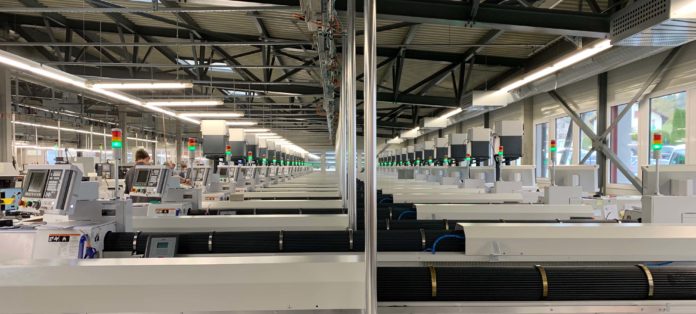First applications of 3D printing in the watchmaking industry highlighted the use of FDM 3D printing for the fabrication of components. Thereafter, every time, a designer or a watchmaking expert has leveraged metal AM in the fabrication process, the end-product turned out to be a real work of art. Remember the Holthinrichs watches or even this 3D printed Panerai Luminor Marina DMLS?
Another expert in watch movement components that will probably turn watches into work of art is Kif Parechoc. Located in the Vallée de Joux, one of the cradles of Swiss watchmaking, the company is a subsidiary of the Acrotec group. It supplies shock absorbing systems, ratchets and barrels for watch brands in the Swiss and European watchmaking industry.
In a recent partnership with metal AM company AddUp, Kif Parechoc has been able to 3D print in metal a watch clasp.
«For this project, we started with a classic product but integrated new aspects, such as lattice structures, organic shapes and recessed markings.» explains Yoann Canon, industrial director of Kif Parechoc. «We are now working on the development of new post-treatment processes, adapted to the requirements of our industry and our production volumes.»
The watch clasp is made of low carbon 316L stainless steel. «This material, commonly used in the field of watch creation, is known for its good mechanical properties as well as its high resistance to corrosion, two essential elements in the making of a watch, comments Dr Maria Averyanova, in charge of luxury market development at AddUp. “From an aesthetic point of view, 316L steel does not lose its shine or tarnish over time, and it has the added advantage of being fully recyclable.»
At the heart of the production, is the manufaturer’s laser powder bed fusion (L-PBF) technology which produces parts in successive horizontal layers, enabling this way savings in raw materials, geometric complexity, and improved part performance.
In this case, the production process allows the fabrication of several parts in a single operation – by a factor of two compared to equivalent products made via traditional techniques -. Those parts have been producing using fine grain size metal powders and came out of the machine precise, without supports and with less rough surfaces than with most parts that have been machined.
Industrialists in the micromechanics sector have been reluctant to adopt metal 3D printing due to the lack of precision and surface finish in the end-product but these are challenges that metal AM has overcome enabling to envision today more applications in the entire microtechnology and micromechanics industry.
Remember, you can post job opportunities in the AM Industry on 3D ADEPT Media free of charge or look for a job via our job board. Make sure to follow us on our social networks and subscribe to our weekly newsletter : Facebook, Twitter, LinkedIn & Instagram ! If you want to be featured in the next issue of our digital magazine or if you hear a story that needs to be heard, make sure you send it to contact@3dadept.com






